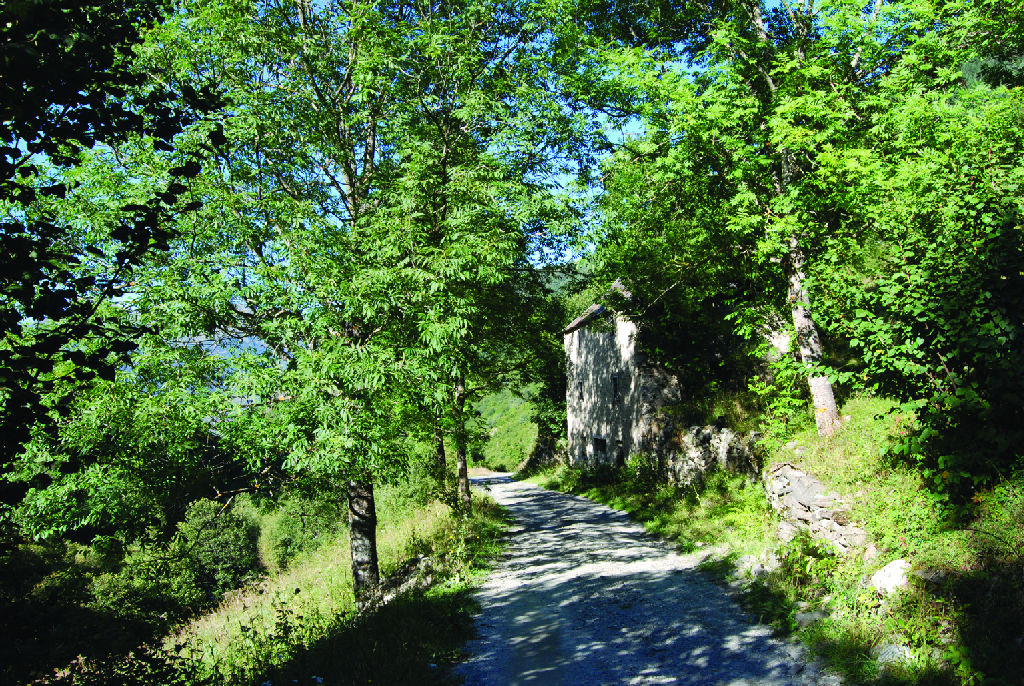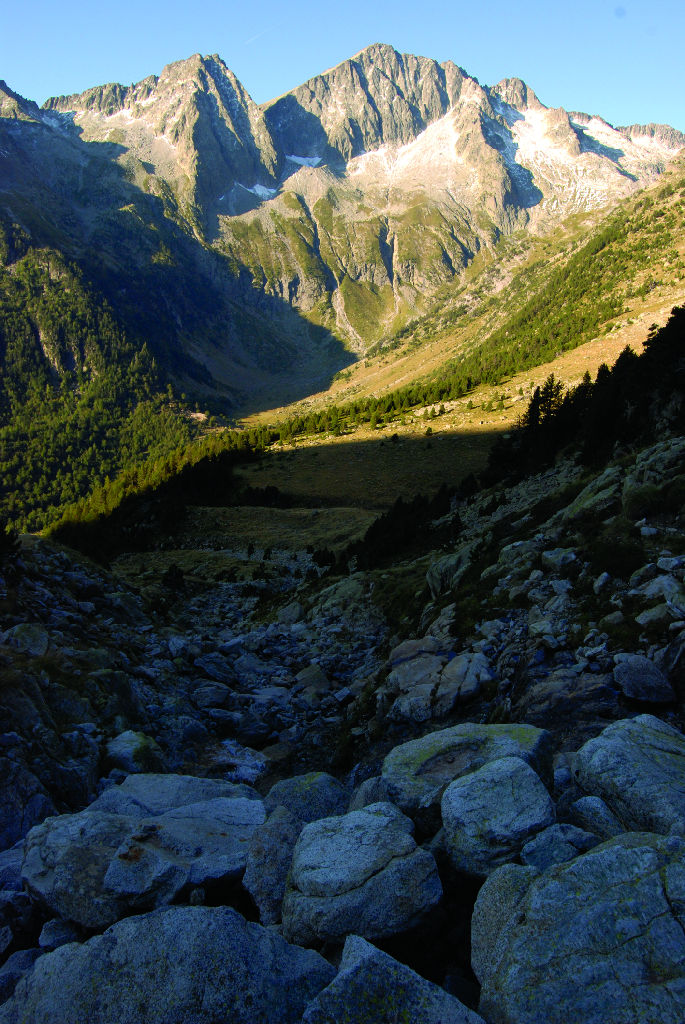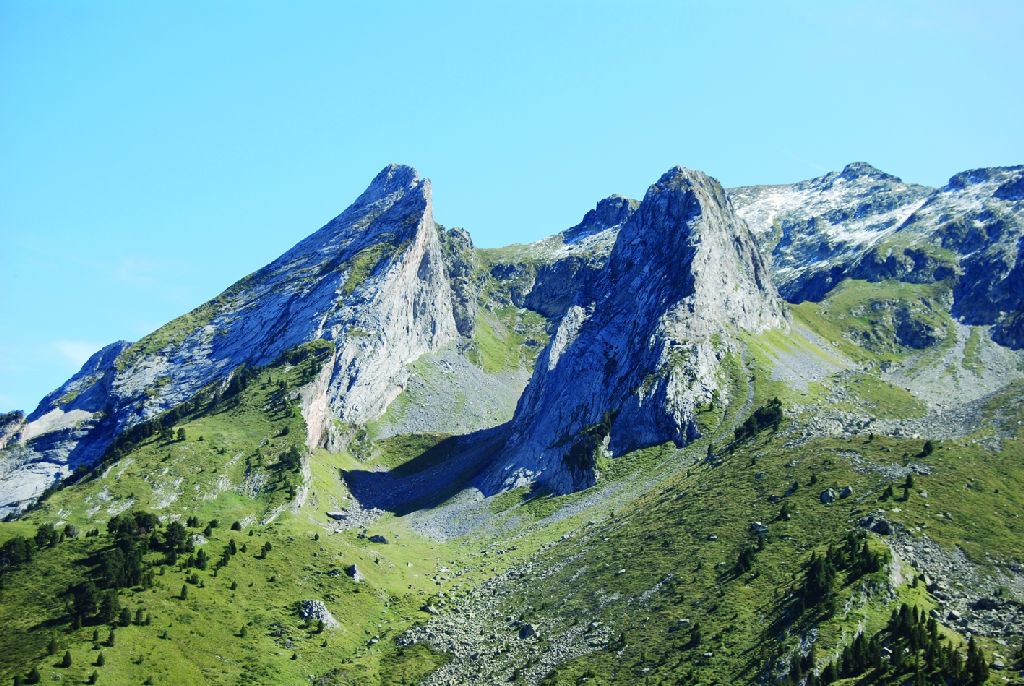- Home
- Rural Development
- Nature Trails
- Nature Trails
- Northeast Sector
- Port de Vielha
Port de Vielha Nature Trail
Description

A path through the heart of the Catalan Pyrenees
The Port de Vielha Nature Trail once again covers an old natural pass that was used in years gone by as a channel of communication between the regions of Arán and La Ribagorza. This natural pass, marked with signposts for the GR-211-5, is crossed every May 22 as part of the traditional pilgrimage of Santa Quiteria, thus celebrating the thawing of the last snows which enables the pass to be crossed..
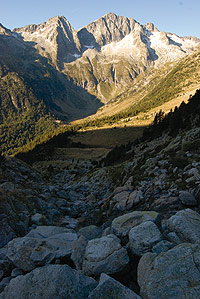
The starting point of the Trail is the southern entrance of the Vielha tunnel on the N-230 highway where, on one side of the road, you can see the Conangle refuge, and where you will find signs that mark the beginning of the path. For 11 km, it crosses the pass, which has a very steep gradient, until it reaches the town of Vielha, visiting some of the most characteristic ecosystems of the Catalan Pyrenees on its way.
You will initially walk along a wide track on the banks of the River Nere, passing a turn-off on your right. Just before beginning your ascent via the high-mountain route, you can see the beginning of a beech wood. This turn-off to the right is marked by boundary stones and a sign that reads Grand Route or, in Spanish, Gran Recorrido (GR) 211-5, which will mark the whole Trail.
You will then reach a post where you have to turn left to enter a strip of pine trees (Pinus uncinata) that accompanies the steep climb between stone blocks. After zigzagging, you will come to another sign for a Nature Trail that climbs up a gentler slope as far as the sign for kilometre 10, at an altitude of 1,800 m.
After crossing a stream, you will pass the last black pine trees that are able to withstand the harsh mountain conditions. From here onwards, the scenery will be filled with the pasturelands that can be found at high altitudes. Once again, a rocky ascent takes the visitor to a turn-off on the left passing a stream and the mouth of some old tunnels. The outline of a building that might be a bunker soon appears at kilometre 9, at 2,205 m.
While admiring the magnitude of the Pyrenean mountains, you continue your journey surrounded by pastures and by climbing gently until you reach the Toro hill. At this point, the path turns to the right, making its way through a section of large granite blocks that must be crossed in order to reach Port de Vielha, situated at a height of 2,423 m.
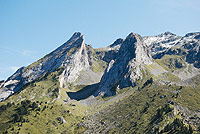
In this way, you will conquer the highest point of this route, from where you can see the Aneto peak, hidden among other large mountain ranges such as the peak of Forconada and the Fechau. If you glance over the other face, you will finally see the mountains that overlook the Val d’Aran.
Your descent begins with a long stretch of scree where you must be very careful as the rocks tend to slide on top of each other. After overcoming this extremely difficult section, the route becomes slightly easier on turning into a path that runs between pastures. Once again another quarry appears which oddly enough is filled with raspberry bushes (Rubus idaeus). On the horizon, the town of Vielha can be seen, while the Trail narrows and leaves the Estany de Fon Freda to the west. The slope becomes steeper in tandem with a glance of the first pine trees growing on the edge of the forest.
By following the GR markings, you can make out the path that is obscured by soft pastures. Before entering the forest, you will reach one of the Nature Trail’s two-way signs, which indicates that you have to turn slightly to the right. By doing this, you will cross a mountain stream by walking over a wooden bridge in front of the kilometre 5 milestone.
From this point onwards, you resume your descent to discover La Cabaña del Pontet, which you have to go around to the left. Walking among fir trees (Abies alba), you will come to a long track that leads to kilometre 4. After passing it, you reach a crossroads where you have to turn right, while the Trail plunges into a fir tree forest passing a path on the left. A few metres further on, the valley viewpoint offers you an exceptional view of the Val d’Aran.
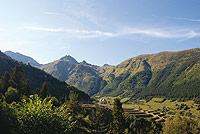
The information panels that are found here describe the characteristics of the valley and of the path. Up until this point, it is also possible to go by motor vehicle from the north entrance of the Vielha tunnel along the forest track of the Port. The Nature Trail continues among hazel-nut trees (Corylus avellana), black poplars (Populus sp.) and yew trees (Taxus baccata), along a narrow path which, although it can barely be seen at the beginning, starts just to the right of the viewpoint.
When the vegetation opens up, the itinerary leads to a power plant at whose rear you cross a bridge. Continuing along a gravel-covered track, you pass the entrance to the A-14 highway in order to go in the direction of Vielha. This last leg has been renovated and some of the final kilometres have even been tarmacked to make it easier for vehicles to drive along. Advancing along this smooth surface, the route ends at a resting area outfitted with barbecues, a parking area for bicycles and a final interpretation panel. You can finally enjoy the town of Vielha.
Sites of interest
Profile
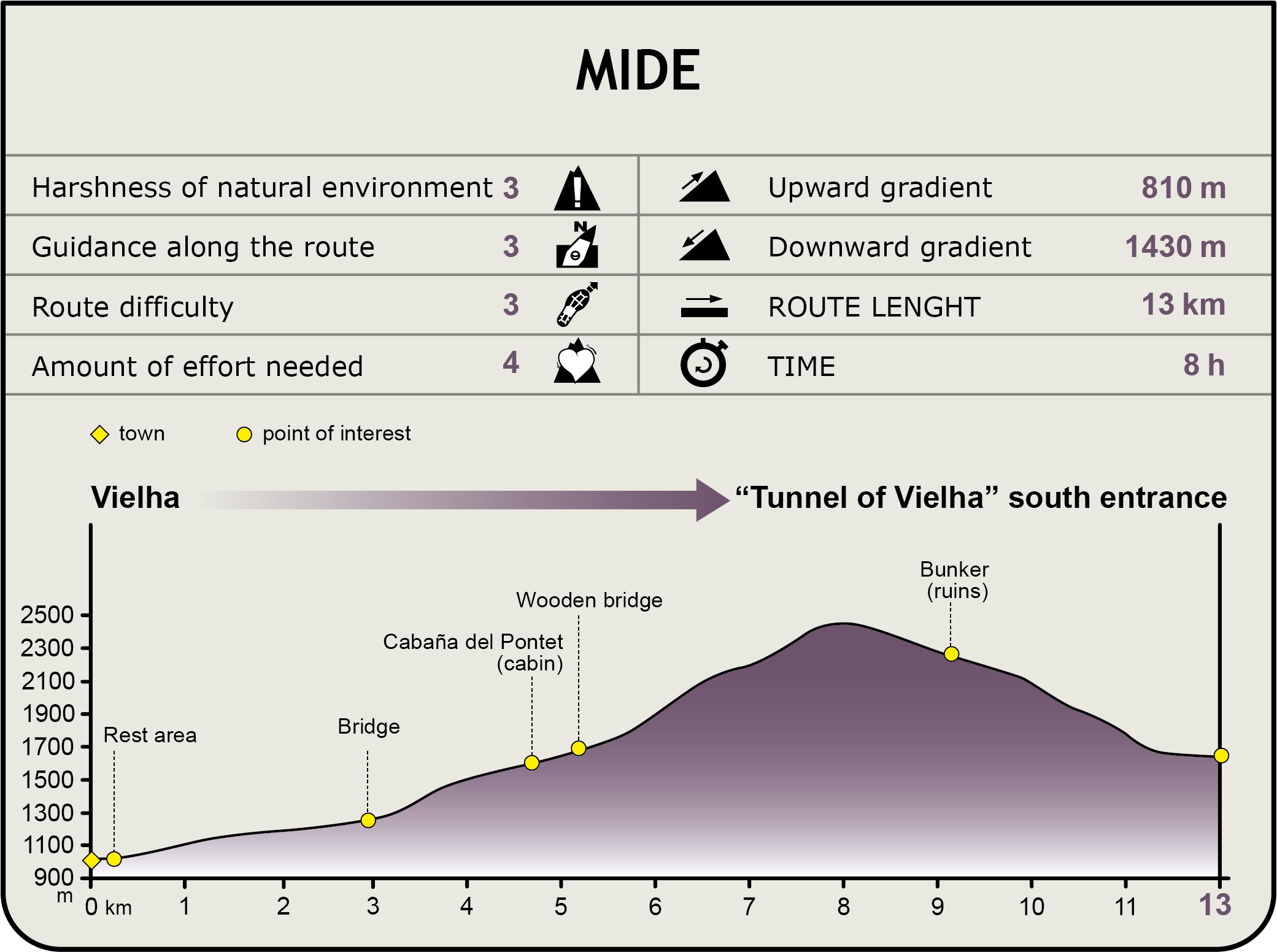
MIDE (Method for the Information of Excursions)
Featured
Further information
The legend of Pyrene
The nymph Pyrene, who according to mythology gave her name to the Pyrenees, fled from the monstrous giant Gerión, who wanted to possess her. She attempted to hide somewhere between Iberia and France, but Gerión burned the entire area in order to find her.
According to legend, when the hero Heracles was trying to steal Gerión’s oxen, he heard her cries among the flames and went to her rescue. The nymph began to cry and her tears created the mountain lakes, but when Heracles found her, he could do nothing to help her.
Heracles, moved by Pyrene’s sad story, began piling rocks on her body to build a mausoleum. He amassed so many stones that he created a large mountain range which he called the Pyrenees in memory of the nymph.
The Vielha Tunnel
EIn July, 1924, the inhabitants of the Val d’Aran took advantage of a visit by King Alfonso XIII to formally ask him to build a tunnel that would make communications easier, as in wintertime they were totally cut off.
The construction works began that very year, but a little later they were stopped and the inhabitants had to wait until 1941 for them to be resumed using the forced labour of Republican prisoners.
Finally, in 1948, after overcoming a gradient of 200 m and reaching a total length of 5 km, the tunnel was finished. The inhabitants of the Val d’Aran continued to use the pathway of the Port de Vielha to trade their products with the rest of the Peninsula.
